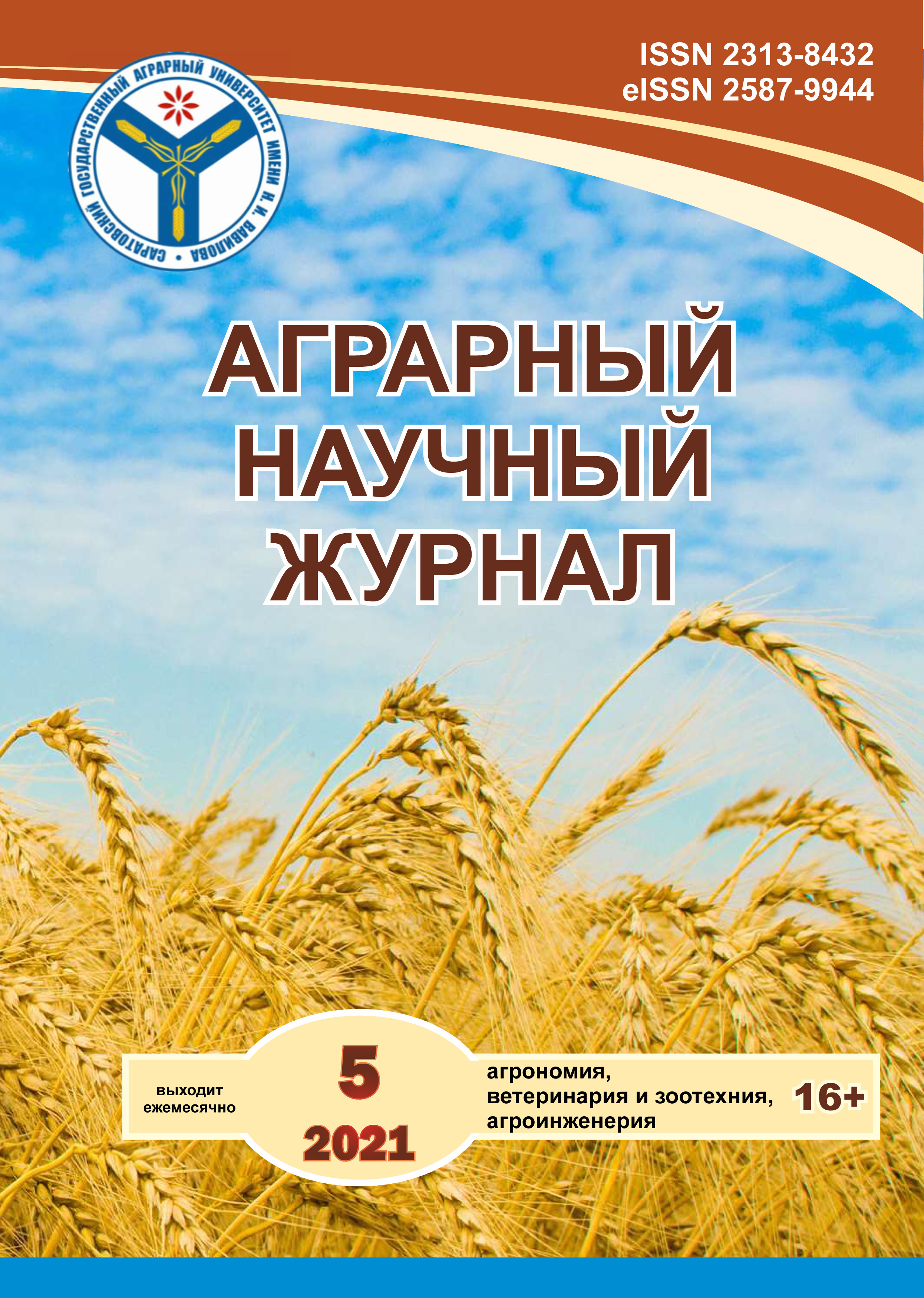Productivity of oilseed flax depending on the use of pesticides and agrochemicals in the conditions of the Lower Volga region
DOI:
https://doi.org/10.28983/asj.y2021i5pp35-40Keywords:
oil flax, fusarium, phytophages, mineral fertilizers, pesticides, biological effectiveness, productivityAbstract
In the course of the research, the effect of dressing oil flax seeds (varieties VNIIMK 620 and Rucheyok) with an insect-fungicidal tank mixture on the preservation of crops from diseases and a complex of phytophages (in particular, flax flea beetles), and an increase in seed yield was revealed. The presented agrotechnical and protective measures aimed at reducing the degree of infection and spread of fusarium (Fusarium lini Boll and Fusarium spp.) of the number of flax fleas (Aphthona, family Chrysomelidae). The introduction of well-grounded methods of using fertilizers contributes not only to the growth and development of crops, increasing yields and quality of seeds, but also contributes to the preservation of soil fertility. Presowing treatment of flax seeds with an insect-fungicidal tank mixture, followed by the introduction of mineral fertilizers N60P30K30 for cultivation, not only created a better protection of crops from disease and a decrease in the damage to the crop by infection in seeds, but also had a positive effect on seed yield.
Downloads
References
Бушнев А.С., Мамырко Ю.В., Подлесный С.П. Продуктивность сортов льна масличного в зависимости от условий выращивания (севооборот, основные обработки почвы) на черноземе выщелочном западного предкавказья // Масличные культуры: Науч.-техн. бюл. ВНИИМК 2009. – Вып. 1 (140). – С. 134–140.
Гайнулин Р.М. Возродим масличный лен // Достижения науки и техники АПК. – 2008. – № 5. –С. 37–38.
Доброзранова Т.Л. Сельскохозяйственная фитопотология – Л.: Колос, 1966. С. 104–112.
Доспехов Б.А. Методика полевого опыта (с основами статистической обработки). – М.: Агропромиздат, 1985. – 351 с.
Кудрявцев Н.А. Зайцева Л.А. Обработка семян – обязательный этап при возделывании льна // Защита и карантин растений. – 2015. – № 2. – С. 20–21.
Лен масличный на Ставрополье: монография / В.К. Дридегер [и др.]. – Ставрополь: Ставропольское издательство Параграф, 2013 – 148 с.
Лен масличный: Селекция, семеноводство, технология возделывания / Ф.М. Галкин [и др.] – Краснодар, 2008. – 191 с.
Льноводство / отв. ред. А.Р. Рогаш. – М.: Колос, 1967. – 583с
Методика проведения полевых агротехнических опытов с масличными культурами / под ред. В.М. Лукомца. –2-е изд. перераб. доп. – Краснодар, 2010. – 327 с.
Миневич В.Г. Химизация земледелия и природная среда. – М.: Агропромиздат, 1990. – 287 с.
Определитель сельхозвредителей по повреждениям культурных растений / под ред. Г.Е. Осмоловского. – Л.: Колос, 1986. – 696 с.
Осмоловский Г.Е. Выявление сельхозвредителей и сигнализация сроков борьбы с ними. – М.: Россельхозиздат, 1964. – 204 с.
Основные элементы технологии возделывания льна масличного в КБР / К.Г. Магомедов [и др.]. // Фундаментальные исследования. – 2008. – № 5. – С. 29–31.
Пересыпкин В.Ф. Сельскохозяйственная фитопотология. – М.: Агропромиздат, 1989. – С. 197–208.
Рекомендации по возделыванию масличных культур в Омской области / И.А. Ложкомойников [и др.]. – Омск: Омскбланкиздат, 2010, 56 с.
Downloads
Published
Issue
Section
License
Copyright (c) 2021 The Agrarian Scientific Journal

This work is licensed under a Creative Commons Attribution-NonCommercial 4.0 International License.








